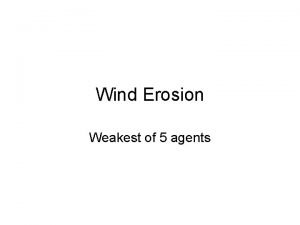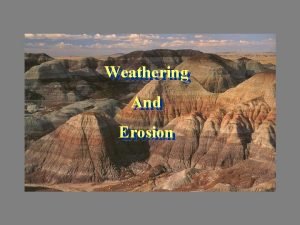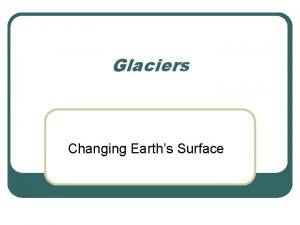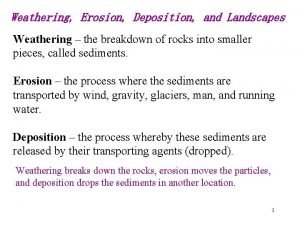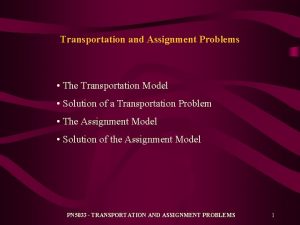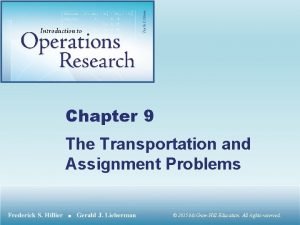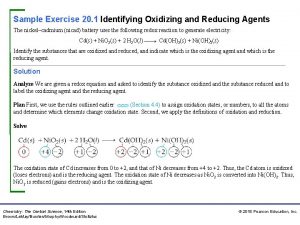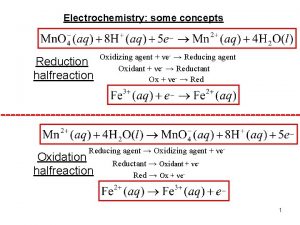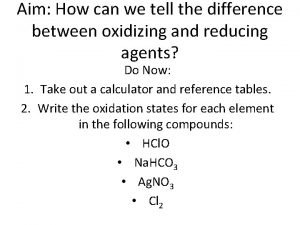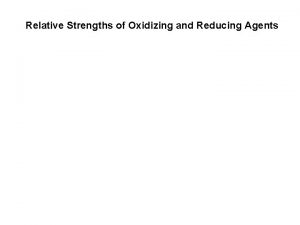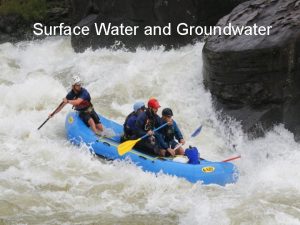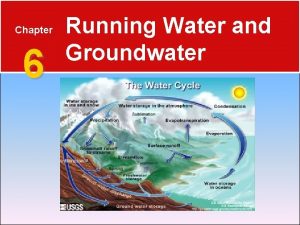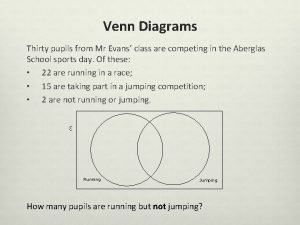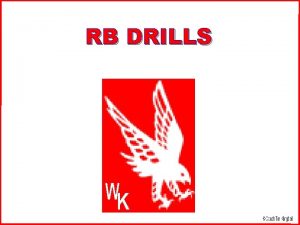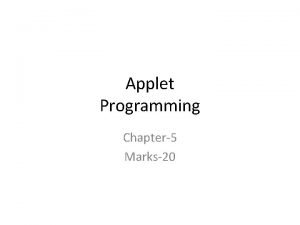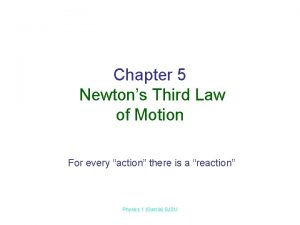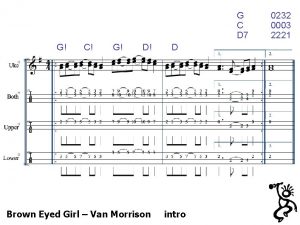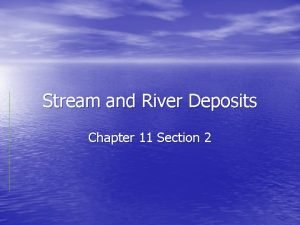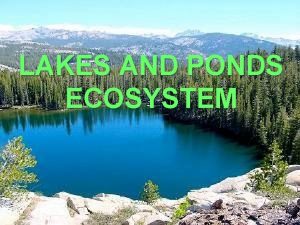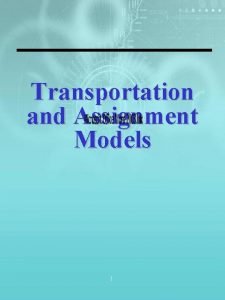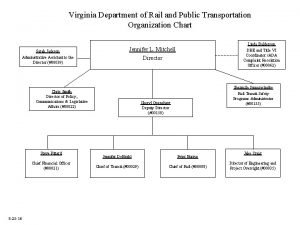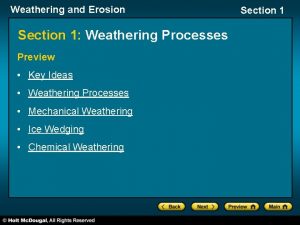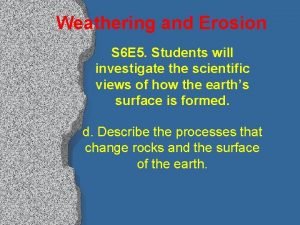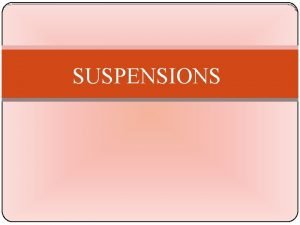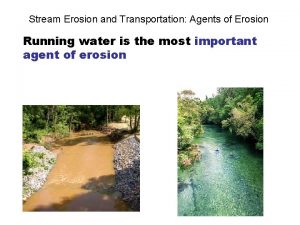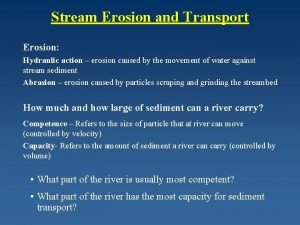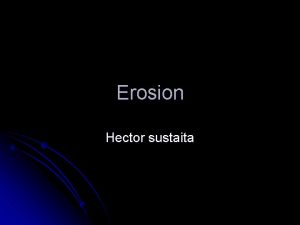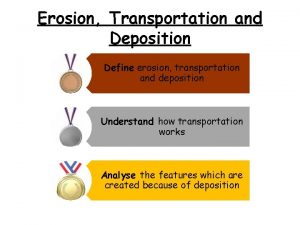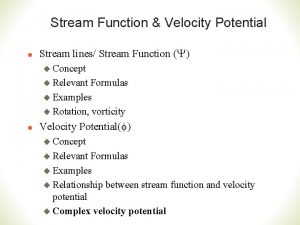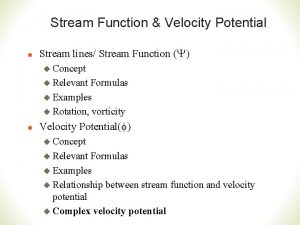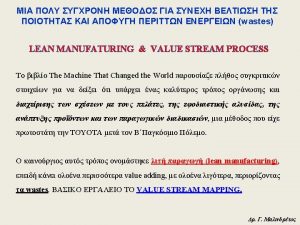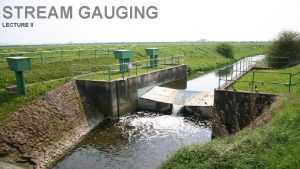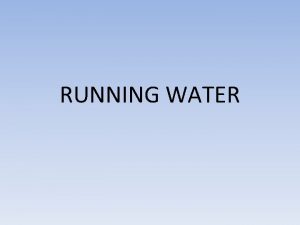Stream Erosion and Transportation Agents of Erosion Running








































































- Slides: 72

Stream Erosion and Transportation: Agents of Erosion Running water is the most important agent of erosion

Water- moves far more material than any other agent of erosion • Streams – Sediments are rounded Small pebbles, rocks, and sand wear down bedrock through the process of abrasion. This rounds off the pebbles and sand grains.

STREAMS CARRY MATERIAL IN … • Solution: dissolved material (includes salts) • Suspension: particles carried in the flow of the water (Clay, silt, sand) • Bed load: particles carried by rolling, bouncing, or dragging along the stream bed (Pebbles, cobbles, boulders)

Water carries sediment in a stream/river by: 1. solution (dissolved) 25% 2. Suspension (carried in the middle 50% 3. Bedload (moved along the bottom) 25%

http: //www. classzone. com/books/eart h_science/terc/content/visualizations/ es 1303/es 1303 page 01. cfm? chapter_n o=visualization

Water Velocity determines the size particle that can be moved via suspension and bed load

Stream Systems • A stream system consists of running water, the land surface it drains, the sediment it transports and the potential energy from gravity used to drive it.

Characteristics of Streams downhill Water always flows ______ Moving water in a stream has friction with the bed of the stream. There is also friction between the surface water of the stream with the air.

Velocity Slope Volume

The carrying power is the amount of material that comprises its load. This depends upon the stream’s speed and discharge. The discharge of a stream is the amount of sediment carried by a stream, not the size of the particles. ____

Effect of Discharge When discharge _______ the average stream velocity ______ This is because as the stream’s discharge increases, the stream becomes deeper and wider in order to move the greater amount of water being supplied to it. As a result, less water is in contact with the frictional stream bed.

Erosion by Streams 50 meters 100 meters The work of a stream – the higher the elevation the greater the potential energy of a stream. 500 meters

• When Runoff becomes confined to a channel a stream exists

Stream Velocity in a Straight Channel Fastest in the middle, just below the surface

Ability to Transport Sediments • Velocity determines the size of sediments that the stream can move. • The faster the velocity, the larger the sediments that can be transported. Which river can carry larger sediment? Such as cobbles and boulders?

How did the Grand Canyon form? Watch the video on how the Grand Canyon was formed http: //www. nps. gov/grca/photosmultimedia/fly-through. htm

River Valleys • Recently formed valleys with swift-flowing streams in them usually are v-shaped

• The base level of a stream refers to the lowest level to which a stream may cut.

The higher land that separates watersheds is called a divide. All of the land that drains into a particular river or stream is called its drainage basin or watershed.

Divide Basin

Drainage Basins • Mississippi River Drainage Basin- There is no stream inside the shaded area that doesn’t flow eventually flow into the Mississippi. • Every single drop of water that flows from the Mississippi River out into the Gulf of Mexico fell as precipitation within that drainage basin (shaded area) Low elevation? High elevation?

Stream Piracy When streams or gullies cross paths and become one stream.

• Water Features

Waterfalls and River Deposits When whirlpools develop in streams and rivers, boulders and pebbles can carve out potholes, or rounded out depressions in the bedrock of a streambed.

Potholes • Created when the bed load is ground into the bedrock by the flowing water



Waterfalls recede, or travel upstream over long periods of time. This is a result of undermining, where a tough upper layer of stone is undercut but weaker rocks beneath it. As it continually breaks off in chunks, the falls move upstream.

• 2. Plunge pools: • Water Features: large pot holes at • 1. Pothole: basins the bottom of a at the bottom of the water fall (p. 178) stream where rocks have eroded • 3. Waterfall: the holes in the top rock is bedrock (p. 177) impermeable or resistant to weathering. (p. 178)


Why does the river appear this way? What is it carrying a lot of? #2


Deposition: the dropping of transported materials (sediments), or the process by which transported materials are left in new locations. • Also known as Sedimentation • There is no deposition without erosion.

Factors affecting deposition • What role does particle size have on the deposition rate?

• Particle size: the larger the particle, the faster it will settle (all other things being equal) • Particle Size: • smaller = slower


60 seconds Reasons for this observed relationship 0 seconds Time The weight of the particle is greater than the upward force of friction Small (clays) Particle Size Large (Boulders)

Particle Shape Do you think particle shape will affect the deposition rate? Apply what you know about surface area and friction


• Particle shape: the more spherical (round) a particle the faster it will settle. (all other things being equal)

Particle Shape vs. Time 0 seconds Time Flat objects = more surface area = will settle slower

What about particle density? 2. 75 g/cc 19. 3 g/cc.

• Particle Density: materials with a higher density will settle faster. (all other things being equal) 2. 75 g/cc 19. 3 g/cc.

Deposition of mixed sediments What will happen if mixed sediment of different sizes, shapes, and densities are dumped into the water column? Let’s try it! E. Vertical sorting- The biggest, roundest, and most dense materials will settle first. Water Column

Vertical Sorting • The degree of sorting is related to the depth of the water the particles are traveling through. Trial 4 Trial 3 • The deeper the water the greater the sorting. Trial 2 Trial 1

(a GRADED BED) Decreasing size Vertical Sorting

Horizontal sorting What happens to particles carried by a stream when the stream begins to slow down? Horizontal sorting- When a stream begins to slow down the largest, roundest and densest particles will settle first. • The smallest particles will be carried the farthest


Sedimentation at the Mouth of a River What happens to the velocity of a stream when it flows into a large body of water?

Deposition (sedimentation) at the Mouth of a River • When a river enters the sea or any other large body of water its velocity suddenly drops. • This causes deposition to begin and because the current doesn’t stop completely at the mouth of a stream horizontal sorting occurs.

Ions in the sea water may come together if the solution becomes saturated and precipitate out of the solution. The largest, roundest, and most dense particles are deposited closest to the shoreline. As you move out from the shoreline the pattern will show a gradual change from coarse to fine, from roundest to flattest, and from most to least dense.

Ages of Streams



Meander- S-shaped curve Fastest on the outside of the curve = erosion Slowest on the inside of the curve = deposition

Water velocity is greatest along the outside curve of a meander. Erosion is dominant. Water velocity is slowest along the inside of a meander. Deposition is dominant.

Inside of meander: deposition is dominant Outside of meander Inside of meander Outside of meander

Characteristics of Erosional-Depositional Systems A place where erosion is dominant and where deposition in dominant.

erosion When a stream has a high velocity _______occurs deposition occurs When the velocity of a stream decreases _______

Sometimes, a meander will cut itself off to form oxbows Oxbow lakes are associated with OLD STREAMS • oxbow lakes


Watch this video: http: //www. wiley. com/college/strahler/0471480533/animations/ch 17_animations/animation 1. html


The life history of a stream • Start at the source – youthful • Go through mature at midstream • End at mouth of stream as old

Story without end • The end result is the world worn smooth by running water. • Uplifting forces raise potential energy and the streams continue.

Deltas Fan-shaped sediments deposits at the mouths of rivers are called deltas. The Nile, Amazon, and Mississippi rivers have welldeveloped deltas.

Alluvial fans form as the result of sediments being washed down the side of a mountain.

Flood Plains The part of a valley where rivers flood to is called the flood plain.

Potential Energy vs. Kinetic Energy At the top of Niagara Falls there is maximum potential energy. When the water begins to fall, its potential energy is changed into kinetic energy. Kinetic energy is energy in MOTION

C. Energy in Erosional-Depositional Systems High P. E End result is lower P. E Low P. E

Potential energy changes to kinetic energy as sediment goes to a lower elevation. The total energy is always decreasing energy KE Source Mouth

read preventing floods on p. 185 and write a paragraph on it. do p. 186 -187 stream divide map activity do p. 188 review 1 -21 and Critical Thinking 1 -4
 Once upon a little man running
Once upon a little man running Running running running
Running running running Differentiate byte stream and character stream
Differentiate byte stream and character stream Weathering and erosion agents
Weathering and erosion agents 5 agents of erosion
5 agents of erosion Difference between erosion and deposition
Difference between erosion and deposition 3 agents of erosion
3 agents of erosion Glacial till
Glacial till Pictures of different agents of soil erosion
Pictures of different agents of soil erosion Erosion types
Erosion types Channel evolution model
Channel evolution model Transportation and assignment problems and solutions
Transportation and assignment problems and solutions Transportation and assignment problems and solutions
Transportation and assignment problems and solutions 6 agents of socialization
6 agents of socialization How to identify the oxidizing agent
How to identify the oxidizing agent Oxidizing vs reducing agent
Oxidizing vs reducing agent Standard reduction table
Standard reduction table Differentiate between oxidizing and reducing agents
Differentiate between oxidizing and reducing agents Model based reflex agent example
Model based reflex agent example Relative strength of oxidizing and reducing agents
Relative strength of oxidizing and reducing agents How agents, constituents and audiences change negotiations?
How agents, constituents and audiences change negotiations? Sdlc parallel run
Sdlc parallel run Running water and groundwater
Running water and groundwater Pros and cons of running start
Pros and cons of running start 5 disadvantages of written records
5 disadvantages of written records Chapter 6 running water and groundwater
Chapter 6 running water and groundwater Venn diagram of running jumping and throwing
Venn diagram of running jumping and throwing Box drill
Box drill Fountas and pinnell benchmark assessment system
Fountas and pinnell benchmark assessment system Steps involved in developing and running a local applet
Steps involved in developing and running a local applet Jumping third law of motion
Jumping third law of motion Label computer parts
Label computer parts Foot biomechanics during walking and running
Foot biomechanics during walking and running Laughing and a running hey hey
Laughing and a running hey hey Chapter 11 section 2 stream and river deposits answer key
Chapter 11 section 2 stream and river deposits answer key Alaska
Alaska Models and issues in data stream systems
Models and issues in data stream systems Drive googlel
Drive googlel Favourite means of transport
Favourite means of transport What are the advantages of water transport
What are the advantages of water transport Advantages and disadvantages of transportation
Advantages and disadvantages of transportation Transportation systems management and operations
Transportation systems management and operations Big blue terrace
Big blue terrace Fish harvesting methods
Fish harvesting methods Orange county towing
Orange county towing Transportation and assignment models
Transportation and assignment models Detachment transportation and deposition
Detachment transportation and deposition Hub and spoke system advantages and disadvantages
Hub and spoke system advantages and disadvantages Virginia department of rail and public transportation
Virginia department of rail and public transportation Transportation systems management and operations
Transportation systems management and operations Osu parking and transportation
Osu parking and transportation Ondansantron
Ondansantron Networked insurance services
Networked insurance services Identify three agents of mechanical weathering
Identify three agents of mechanical weathering Feldspar
Feldspar Topical definition
Topical definition Thrombolytic medication
Thrombolytic medication Mechanism of action of thrombolytic agents
Mechanism of action of thrombolytic agents Thermal agents
Thermal agents Formal agents of social control
Formal agents of social control Suspension meaning
Suspension meaning Sar of adrenergic antagonist
Sar of adrenergic antagonist Nourishing element
Nourishing element Classification of soups
Classification of soups Agents of socialization sociology
Agents of socialization sociology Agents of socialization
Agents of socialization What is the agent of socialization
What is the agent of socialization Characteristics of social control
Characteristics of social control Sabyonne
Sabyonne Formal agents of social control
Formal agents of social control Types of raising agents
Types of raising agents Leavening agents in quick breads
Leavening agents in quick breads Surface active agents
Surface active agents




